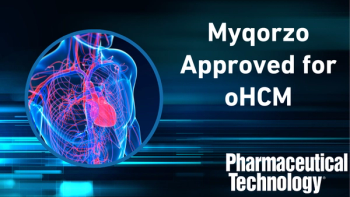
- Pharmaceutical Technology-04-02-2008
- Volume 32
- Issue 4
Tracking the Potential of Excipients
Excipient producers and industry observers share their perspectives on innovation for excipients.
Excipients are an important part of a formulation, but regulatory hurdles and economics make it difficult to bring new excipients to market. Despite these obstacles, excipient producers see opportunity for innovation and in working more closely with formulators to improve the understanding of excipients in a formulation as well in meeting specific needs when formulating poorly water-soluble drugs and in nanotechnology.
Quality by design offers opportunity
On a developmental basis, excipient makers point to important trends affecting innovation in excipients. "Definition and testing of excipient functionality is an issue as well as the education of formulators in the use of excipients," says Alen Guy, vice-president of research and development at
Advancing poorly water-soluble drugs
Other producers see opportunity in poorly water-soluble drugs. "New excipients should focus on the very often poor solubility and poor resorption into the body of many new chemical entities coming from active pharmaceutical ingredient (API) research," says Dr. Ralf Widmaier, marketing manager at
Brian Koblinski, market development manager of pharmaceutical excipients at
Nanotechnology and excipients
As the field of nanotechnology widens, so does the role of excipients. In a recent analysis,
One application involves nanocoatings that are used to protect small tablets and assist in the ingestion of high therapeutic doses (600–800 mg). BCC Research offers as an example BASF's ibuprofen DC 85 formulation with a nanolayer that protects against temperature influences and speeds up production (700,000 tablets/h as compared with 200,000 normally) (1, 2). Nanocoatings reduce the amount of lubricants needed and eliminate the need for wet granulation and compacting (1).
In another example, Justin Hanes and a team of
Nanotechnology is also being applied to human serum albumin (hSA), an approach taken by
Excipients used in nano-sized liposomes also offer opportunity, "The pharmaceutical industry has made overtures toward the use of liposomes (or 60 nanometer-sized emulsion droplets) as delivery systems but has yet to accept them fully," reports the BCC Research study. "That acceptance has been stalled, in part because of the lack of precise scientific data on the exact role of lipid-based excipients (oleochemicals) and their influence on adsorption of the drug." The excipients are used to stabilize the liposomes (1).
In addition, fatty acids, alcohols, esters, and ethers are being considered as excipients for nanoparticle matrices. "Minimal amounts of excipients are being used in vivo nanoparticle formulations with similar or enhanced immunogenicity in comparison to that of alum," according to the BCC Research study (1).
A case in point is the work of researchers at
Calcium phosphate is also being considered as a replacement for aluminum salts, an
References
1. "Excipients in Pharmaceuticals," Report No. PHM010E, BCC Research (Norwalk, CT, 2006).
2. P. Van Arnum, "BASF Advances Nanocoating for Ibuprofen Formulation," Pharm. Technol. 30 (6), 48 (2006).
3. K. O Hagan et al., "A Practical Approach to the Use of Nanoparticles for Vaccine Delivery, J. Pharm. Sci. 95 (12), 2738–2750 (2006).
For analysis and trends in the excipient market, see the article "
Articles in this issue
over 17 years ago
Suppositories: The Incomplete Storyover 17 years ago
A Transformation in the Makingover 17 years ago
Vapors, Venison, and Videosover 17 years ago
Inside IPEC-EUROPE: Pharmaceutical Excipients—The View from the EUover 17 years ago
Measuring Excipient-Market Growthover 17 years ago
Report From: China, May 2008over 17 years ago
Weak Link in the Pharmaceutical Supply Chainover 17 years ago
Spectrophotometric Determination of Leadover 17 years ago
Message in a Bottleover 17 years ago
Coming Down the Pike: Bispecific mABsNewsletter
Get the essential updates shaping the future of pharma manufacturing and compliance—subscribe today to Pharmaceutical Technology and never miss a breakthrough.




